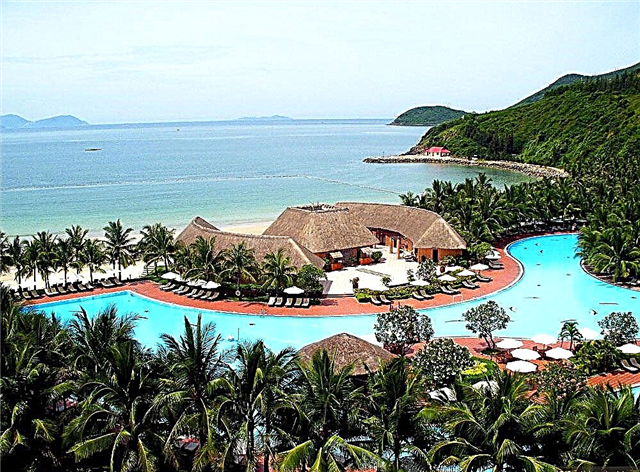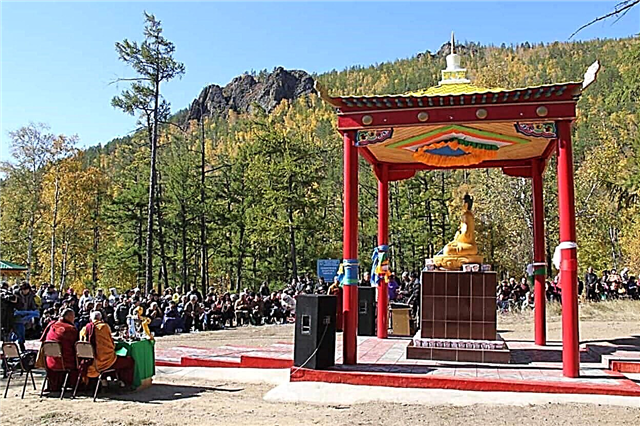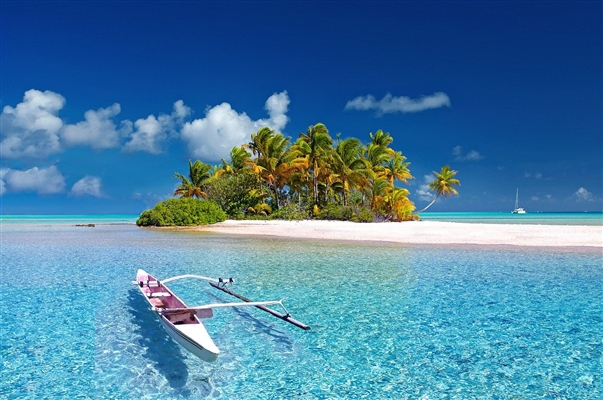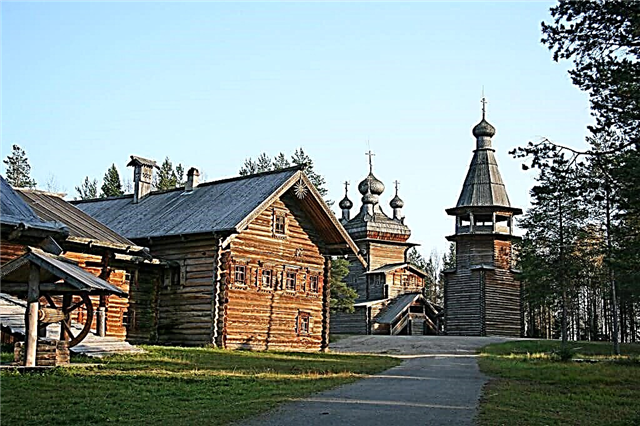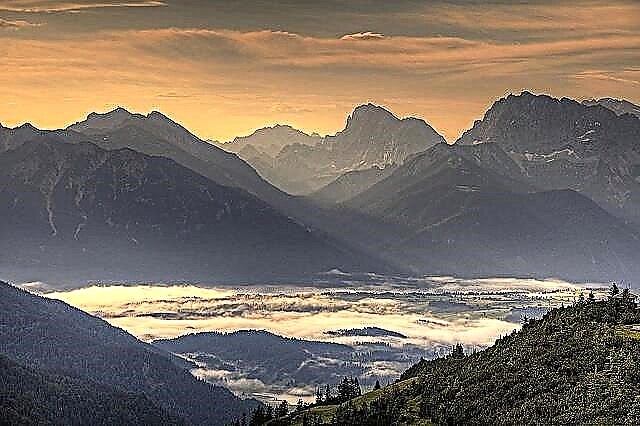What you need to know when going on a trip to Germany: how to get there on your own, how to get a visa, what documents are needed to travel by car. We also talk about what to see in the 16 federal states of Germany and what local food to try while traveling.
Planning a trip to Germany is not as easy as it might seem at first glance, unless you are an ardent supporter of herd excursions and a fan of travel guides. You should go to Germany exclusively on your own: stop for a long time in small towns, getting to know the local cuisine and savoring beer brewed according to traditional recipes, go off the beaten paths by tourists, exploring the surroundings or choosing your own, non-postcard view of the castles, and, of course, observe for the locals - who else can help you get to know the country from the inside, if not they?
You can take out insurance for a tourist trip to Germany online at Sravn.Ru or Cherehapa - they compare prices from all major insurance companies. You can choose a policy according to the parameters you need and the best price. The policy costs from 300 rubles per week.
How to get to Germany?
The easiest and cheapest way to get to Germany is by plane: round-trip tickets from Moscow to Berlin cost from 7 thousand rubles (Transaero, Air Berlin), and sometimes even cheaper. From Moscow to Dusseldorf, Hamburg and Frankfurt am Main, round trip tickets cost from 8 to 9 thousand rubles. To Hanover, Munich, Cologne - from 9 to 10 thousand rubles. You can fly inexpensively to Berlin from Kaliningrad (about 8 thousand rubles). In general, you can fly from the provinces to various cities in Germany for 10-13 thousand rubles. Germany (in terms of airfare) is one of the most affordable destinations for tourists flying from Russia.
Travel to Germany by bus
Traveling to Germany by bus from Moscow is not entirely convenient, it is more profitable (and cheaper) to buy plane tickets. For Ecolines, a bus ticket from Moscow to Berlin with a transfer in Riga costs about 10 thousand rubles (round trip), while a plane ticket costs about 7 thousand rubles.
You can travel to Germany by bus from Kaliningrad: tickets to Berlin (round trip) cost about 4-6 thousand rubles.
Travel to Germany by car
Traveling to Germany on your own by car will be a pleasant journey if you remember to comply with the requirements.
What you need to have in your car to travel to Germany:
- reflective vest;
- first aid kit;
- warning triangle;
- spare lamps;
- fire extinguisher (if traveling through Poland).
Documents for travel to Germany
At the border, you must present a valid passport and visa, medical insurance and confirmation of the availability of funds (rarely, but may be requested). Of course, you need to have a driver's license, car documents, green card. It is also better to buy an environmental permit if you plan to enter protected areas. Before traveling to Germany, we recommend that you put your car in order: the windshield must be free of cracks, the body must be intact, and the lights must work.

Visa for a tourist trip to Germany
To travel to Germany, you can do either a Schengen visa (stay less than 90 days) or a national visa (stay over 90 days). Find out how to independently obtain a visa to Germany.
Required documents for obtaining a visa to Germany:
- a completed and signed application form (you can download the application form and read about the requirements for photographs on the VFS.GLOBAL website);
- a passport valid for at least 3 months after the date of departure from the Schengen area and not older than 10 years. The passport must have 2 blank pages;
- a copy of the first page of the passport;
- copy of the internal passport;
- two photographs that meet ICAO requirements;
- visa fee (consular fee - 35 euros, service fee - 18.85 euros);
- medical insurance valid in the Schengen countries;
- hotel reservation;
- copies of air or railway tickets - proof of the travel program;
- proof of employment or financial solvency.
Also, detailed information on visas for tourist and other trips to Germany can be found on the website of the German missions in Russia.
Travel accommodation. Look for hotels at the best price on Rumguru - the world famous service. There you can also read useful travel reviews about hotels, attractions, cafes and restaurants.
If you prefer to travel to live in private apartments and houses, then it is better to look for them on the popular rental service from the owners of Airbnb.ru - there you can find very cozy accommodation at any price!
A trip to Germany: by cities and towns
Look for interesting excursions on the Sputnik and Tripster websites. The most popular in the selection are the 8 best excursions in Berlin.
A trip to Germany will puzzle any traveler: how to see the main sights of the country in a short time without missing out on less popular, but no less interesting places? After all, a country with such a great past is simply impossible to take a quick glance at, especially since the number of sites included in the UNESCO World Heritage List and located in Germany inspires respect - there are 38 of them.
Germany consists of 16 federal states, and perhaps it is best to choose 2-3 cities from each district to visit in order to appreciate the diversity and beauty of the German state. We offer you a short overview.
Celebrate the New Year in Germany: tips, ideas, traveler reviews, and hotel and food prices during the winter holidays.

Baden-Württemberg
Baden-Württemberg is an interesting combination of old and new technologies: Stuttgard, a powerful industrial center, neighbors Heidelberg - a city whose university became the center of the second generation of German romantics, a city of theaters and museums that was not destroyed by bombing during the Second World War, and also with Baden-Baden - once a fashionable spa town, beloved by aristocrats. It is impossible not to remember the Black Forest - a mountain range covered with forest, with wonderful lakes and waterfalls.
Bavaria
The Free State of Bavaria is famous for its ancient beer traditions: if you look at the beer map of Germany, you will notice that most of the breweries are concentrated in the Bavarian land - there are about 750 breweries and there are about five thousand different types of beer. Bavaria also attracts tourists with its unforgettable landscapes, fairytale castles and the proximity of the Alps.
Read more about this land: Self-guided travel to Bavaria.
Berlin and Brandenburg
When traveling in Germany, the lion's share of the time is usually devoted to Berlin, since the sights of Berlin are not limited to the famous Brandenburg Gate and the Victory Column, their list is simply off scale. This city is one continuous attraction: Gendarmenmarkt Square, Berlin Cathedral, Reichstag, Red City Hall, Berlin Wall ... Museum lovers also have a place to roam: museums from the National Historical Museum to the Beata Uze Erotic Museum are concentrated here. And in Brandenburg, the center of which is Potsdam, you can calmly rest away from the noisy metropolis: pristine landscapes stretch out in the vicinity of the city.

Free Hanseatic cities of Bremen and Hamburg
Hamburg is a large port city, with some of its medieval buildings preserved. What to see: Town Hall and Town Hall Square, houses from the 16th - 17th centuries, churches and museums. Bremen is also a major port. Here you can see a monument to the Bremen Town Musicians, a gorgeous town hall and a Gothic cathedral, the market square and Bötcherstraße street.
Hesse
The land of Hesse is the birthplace of the beloved storytellers of the Brothers Grimm, a museum dedicated to them is located in the small town of Steinau an der Straße, where the writers lived and worked. Ecological tourism is actively developing in Hesse; the entire region can be cycled along historical routes. There is also the "Fairy Tales Road" - a 600 km long route, each stop of which is associated with fairy-tale characters.
Mecklenburg-Western Pomerania
Mecklenburg-Vorpommern is the coast of the Baltic Sea and a myriad of nature reserves, Schwerin Castle, Gothic cathedrals and Hanseatic cities - Mecklenburg, Wismar, Rostock.
Lower saxony
Lower Saxony is a land washed on one side by the waters of the North Sea, and on the other bordering the Harz Mountains, through which Heine once traveled. Most tourists are interested in the Luneburg Heath, many castles, the North Sea coast and the Harz Mountains. The most popular cities are Hamburg and Bremen, which, however, have the status of free Hanseatic cities, that is, they are not part of Lower Saxony, whose capital and main city is Hanover.
North Rhine-Westphalia
North Rhine-Westphalia is home to UNESCO sites such as Cologne Cathedral, Aachen Cathedral, Augustusburg Palace and the Zeche Zolfrein mine. The region is ideal for outdoor activities with many cycling and hiking trails, including the Rotharsteig trail.
Rhineland-Palatinate
Rhineland-Palatinate is a wine region. The region is also conducive to active rest, there are picturesque routes. Most visited cities: Mainz, Trier, Koblenz, Worms.
Saar
Saarland is the smallest region in Germany. The land is known for the "Saar Loop" - the bend in the river that Hugo admired. It is best to admire the bend of the river from the Klöf observation deck or the ruins of Montclair castle.

Saxony
When traveling on your own in Germany, special attention should be paid to the mountains. The Free State of Saxony captivates with its landscapes thanks to the Saxon Switzerland, called the pearl of Germany, the Ore and Luzhitsky mountains, as well as the Elbe River, which crosses the land. Important cities are Dresden - "Florence on the Elbe", Leipzig and Chemnitz.
Saxony-Anhalt
In Saxony-Anhalt, the most attractive are the Harz, with its highest point Brocken, described by Goethe in Faust, the place where witches gather on Walpurgisnacht, and the Romanesque Road, or the Road of Romanesque Buildings, stretching for a thousand kilometers along the territory of Saxony-Anhalt and includes about 80 medieval buildings. The capital of Magdeburg, the ancient city of Quedlinburg, which conquers travelers with an ensemble of medieval half-timbered houses with red tiled roofs, Halberstadt and Burg-Wolkenstein, are must-see.
Schleswig-Holstein
Schleswig-Holstein is primarily the North and Baltic Seas. Lovers of the sea climate come here, so there are many resorts on the coast: the islands of Amrum and Sylt, the Travemunde region and the city of Oitin. Kiel, UNESCO-listed Gothic Lubeck and Schleswig are interesting to visit.
Thuringia
The Rensteig, a 170 km long hiking trail through the Thuringian and Franconian forests and the slate mountains, passes through the hills of the Free State of Thuringia. The capital of Thuringia is Erfurt, the medieval center of which has remained intact. Jena, Eisenach, Weimar are notable.

Food in Germany: what to try
Germans are renowned for their hospitality, excellent beer and hearty food. The three pillars of the German cuisine are beer, cabbage and sausages (sausages). Although food may vary from region to region, the basis of German cuisine remains the same.
Not a single table in Germany can do without meat products. Various sausages (the most famous are Bavarian), sausages and wieners can be either an independent dish or an ingredient in the preparation of other dishes. Pork is especially popular.
However, the dish associated with the Germans is sauerkraut stew with sausages. In Germany, especially in the east, they generally like sauerkraut, which is considered a national dish. Find out about the best restaurants in Berlin.
In Bavaria, you will be offered to taste Stockwurst - white veal and pork sausage with sweet mustard, lebkuchens, Bavarian sausages and Nuremberg sausages.
In Franconia, you should try Franconian wines, in Swabia and Baden-Württemberg - soup with pancakes and Spetzle noodles. In the north of the country, where fish dishes are held in high esteem, be sure to order fried sole and eel soup.
The Germans also love pastries: the kitchen is replete with pies and cakes with various fillings, as well as mousses, jellies, and so on.
Traditional German drinks are, of course, beer, mulled wine, Riesling, cider and schnapps.
Turkish fast food is very popular in Germany - satisfying and budgetary. This is a doner kebab - a pita filled with meat, sauce and vegetables that is sold on the street and costs 3-4 euros, a Turkish pizza (Lahmacun) and a plate of meat, vegetables and rice.
You can have an inexpensive meal in Berlin in the Kranzler cafe on Kurfürstendamm street, in the La Crapule cafe or in the Morgenland cafe. You can visit the Block House or Nordsee chain restaurants with a cozy atmosphere and reasonable prices. In general, there are a lot of interesting places in Berlin, as well as restaurants with cuisines from all over the world, you just have to turn into some forgotten side street to find exactly what you like.


